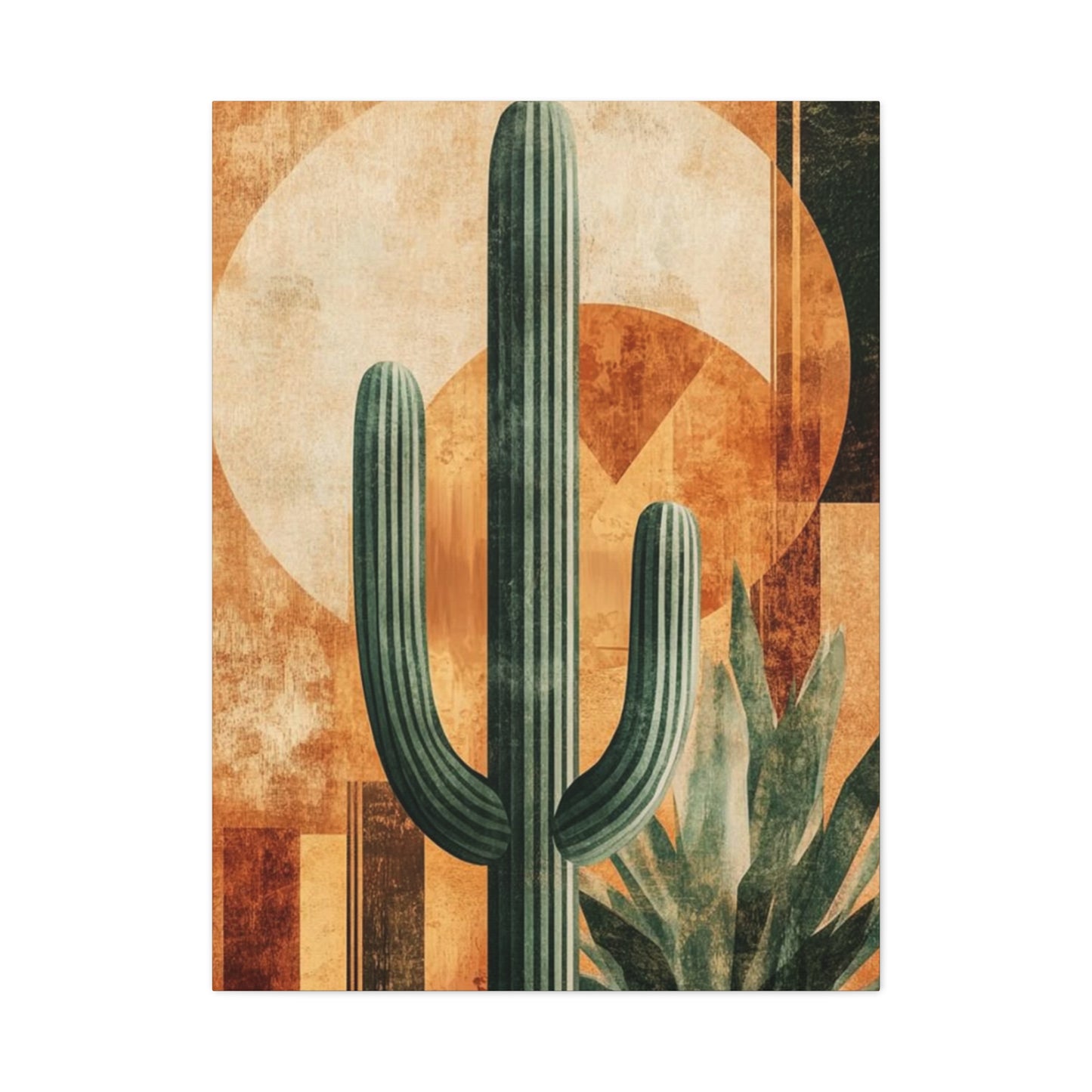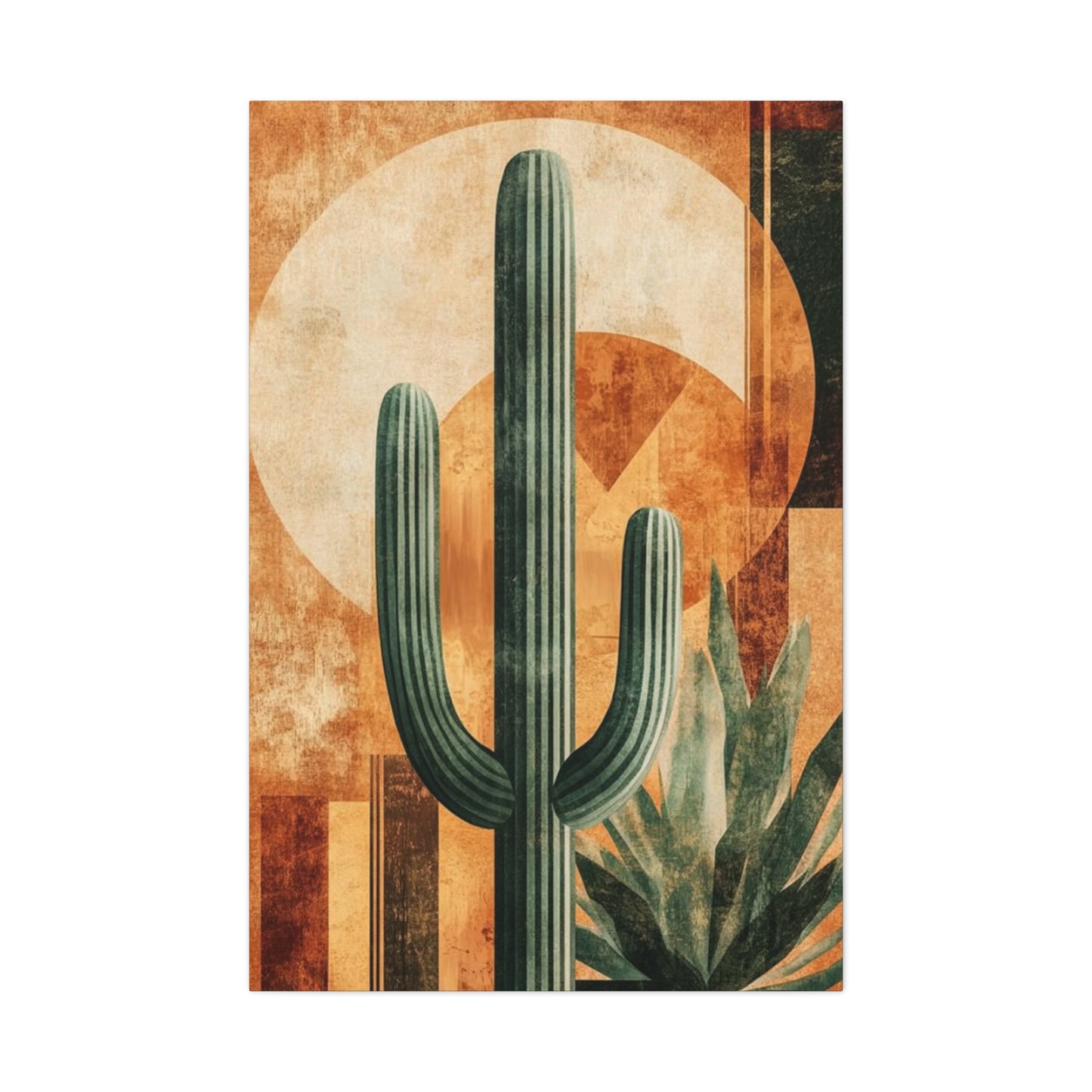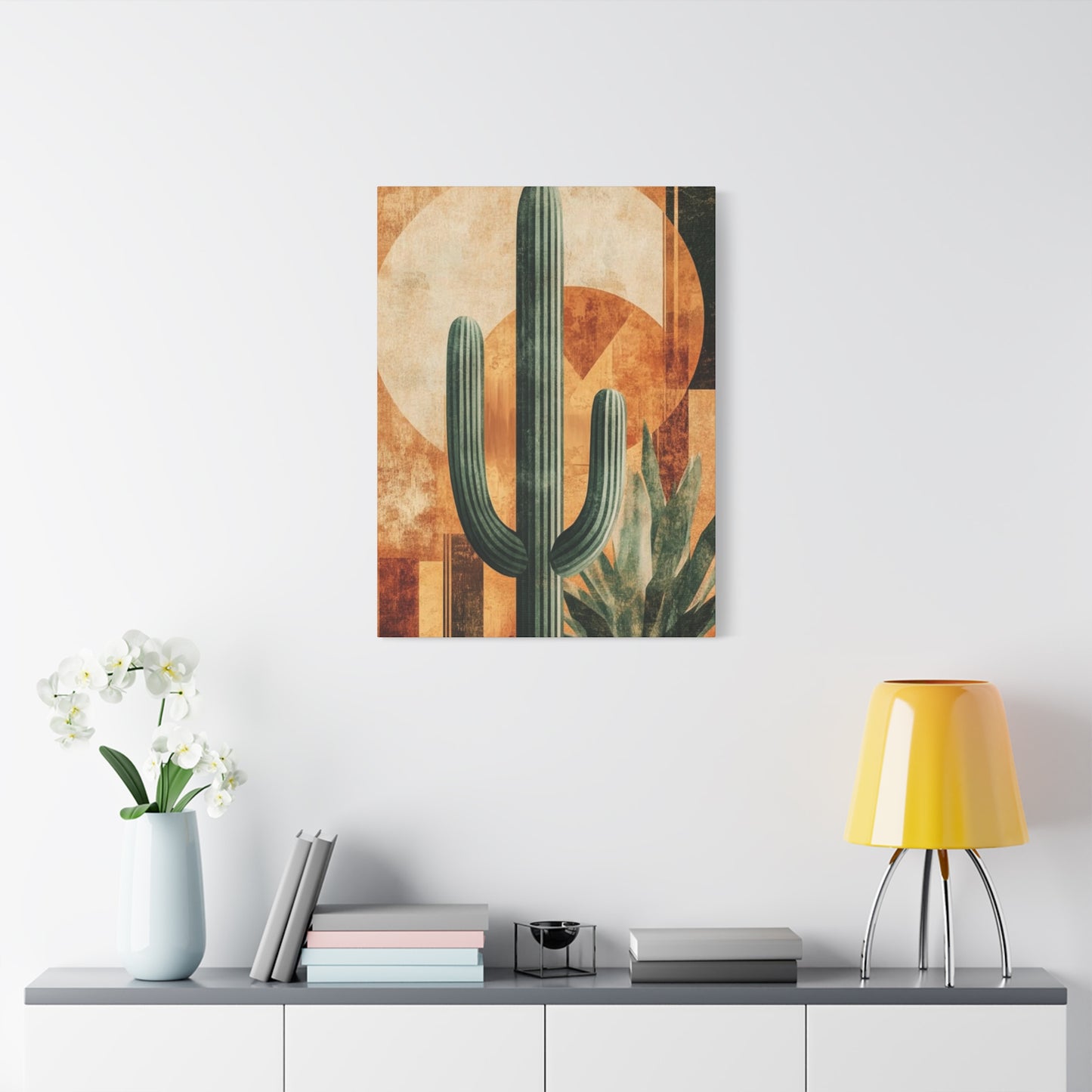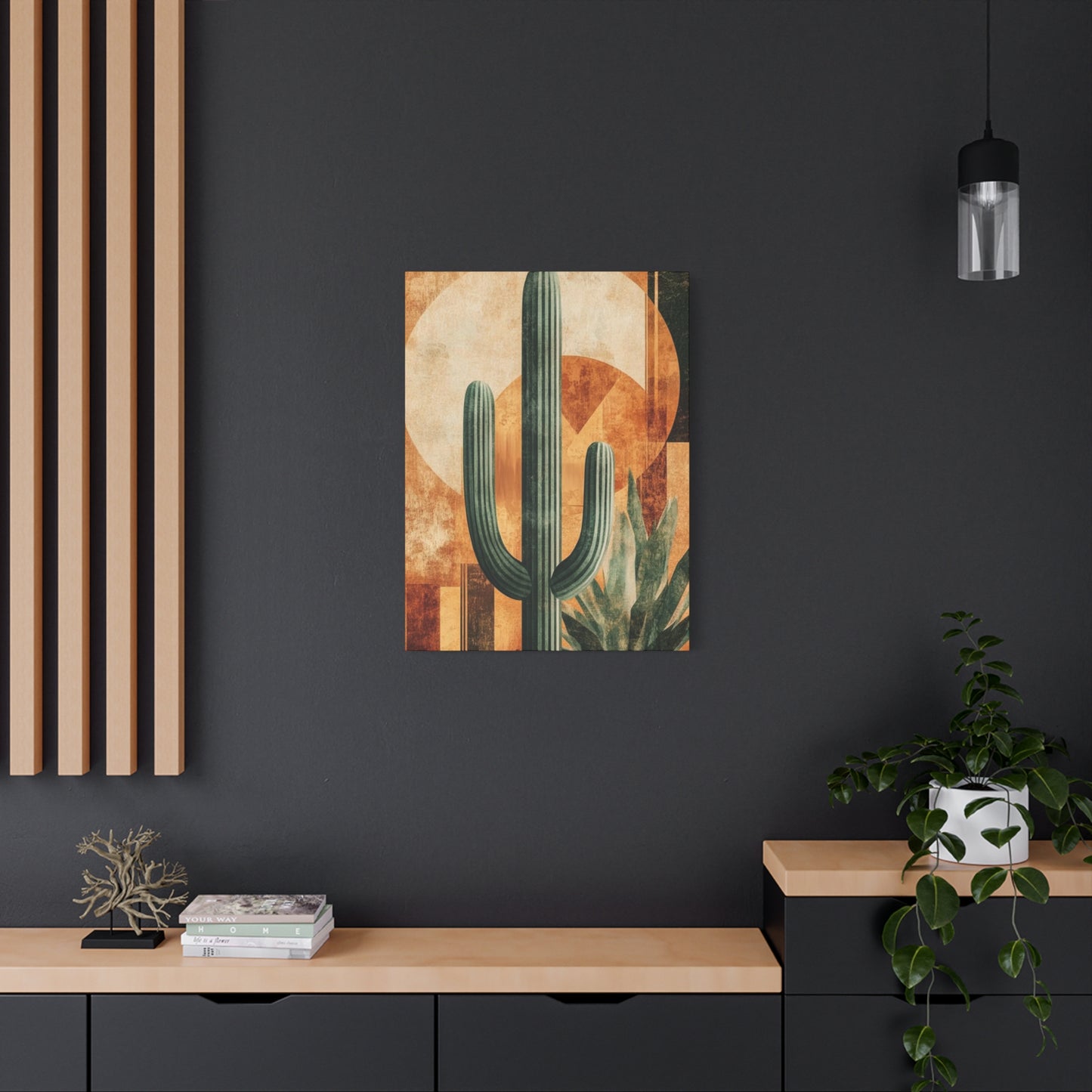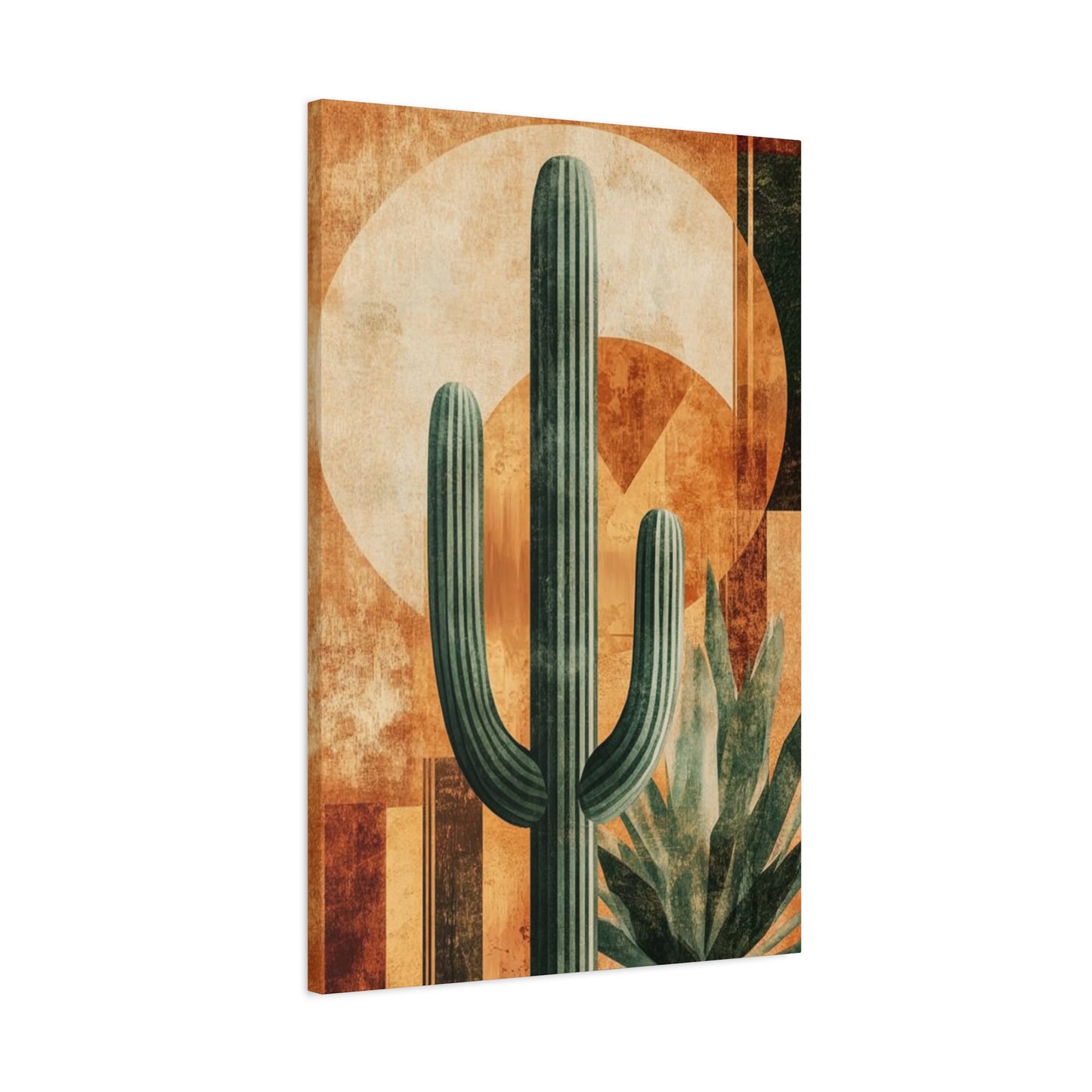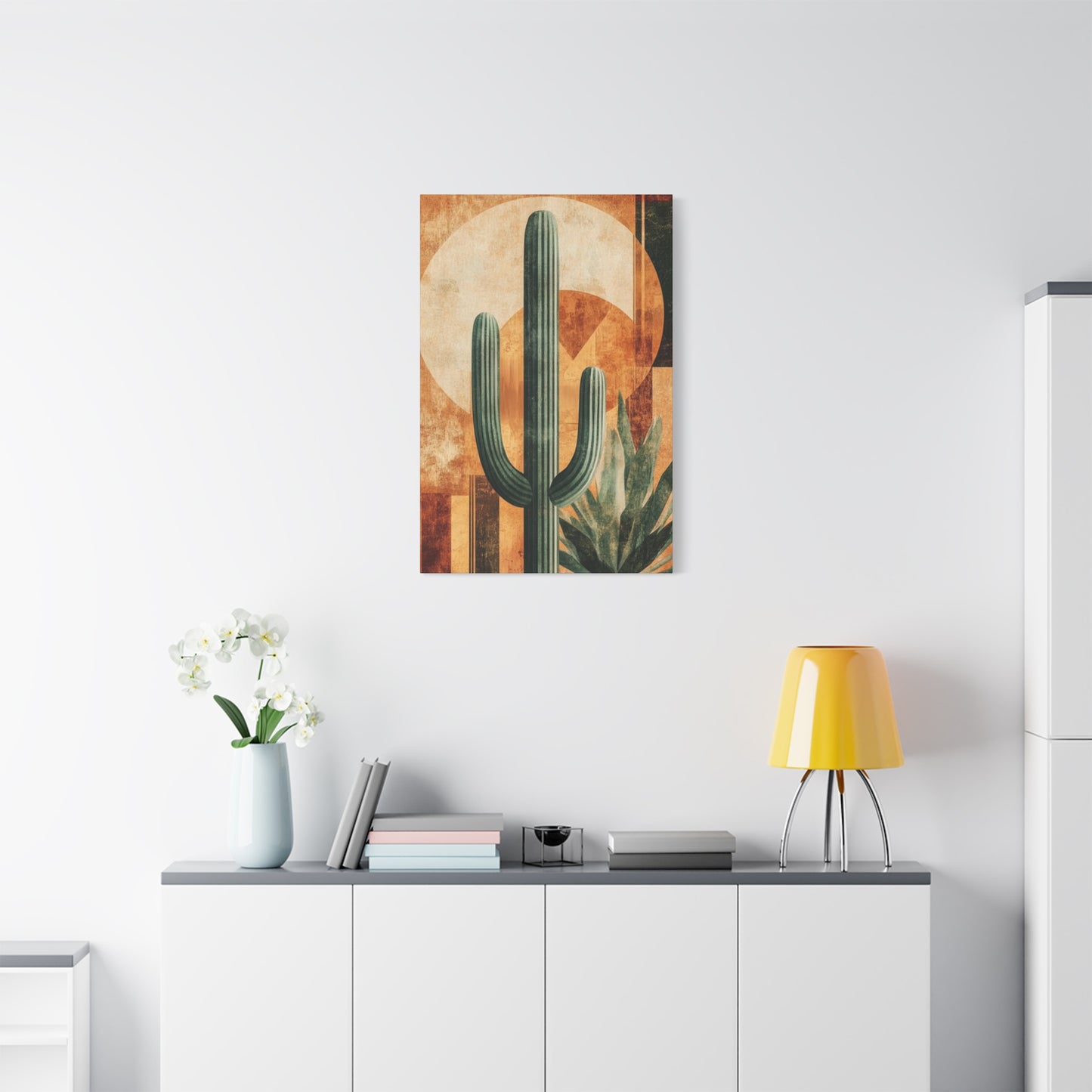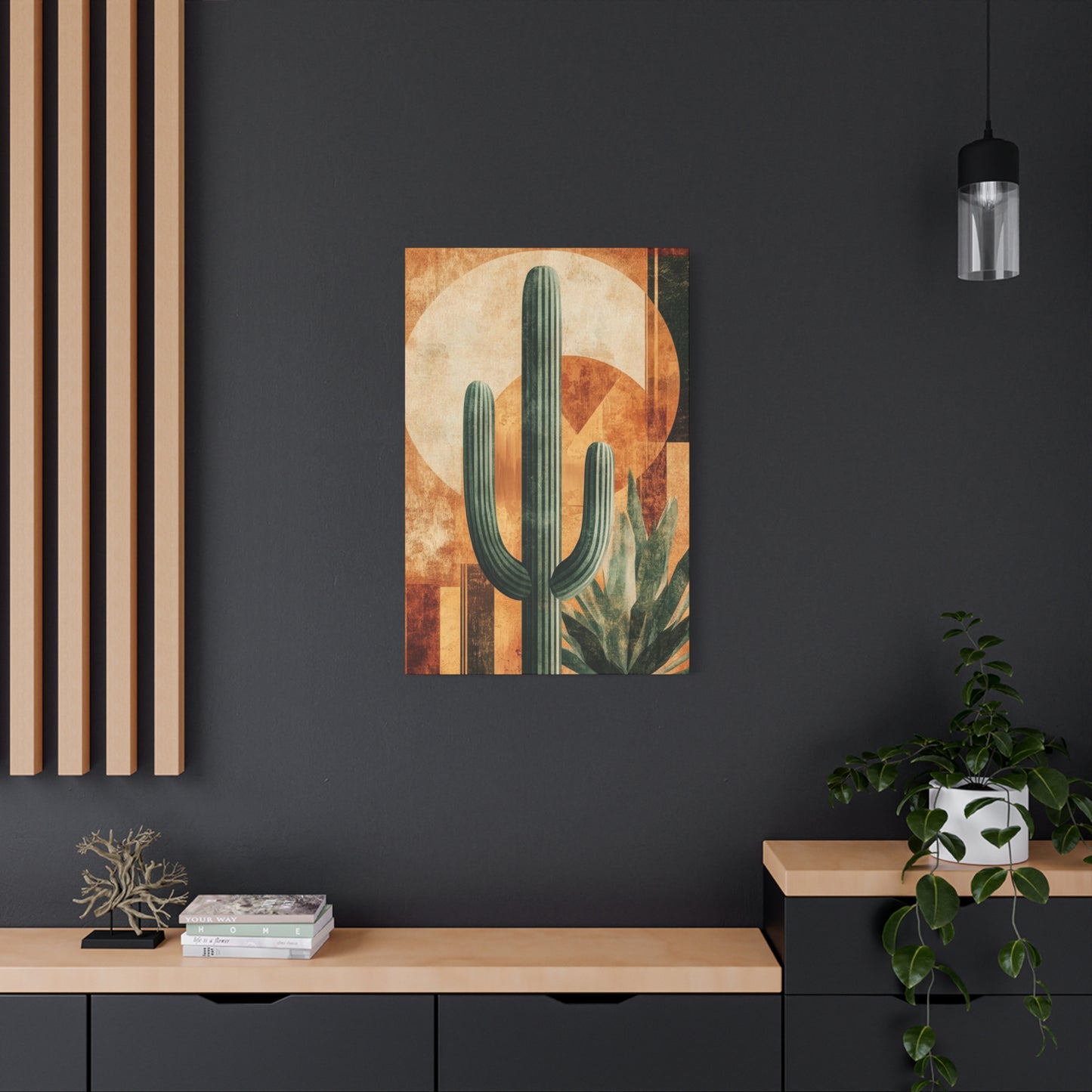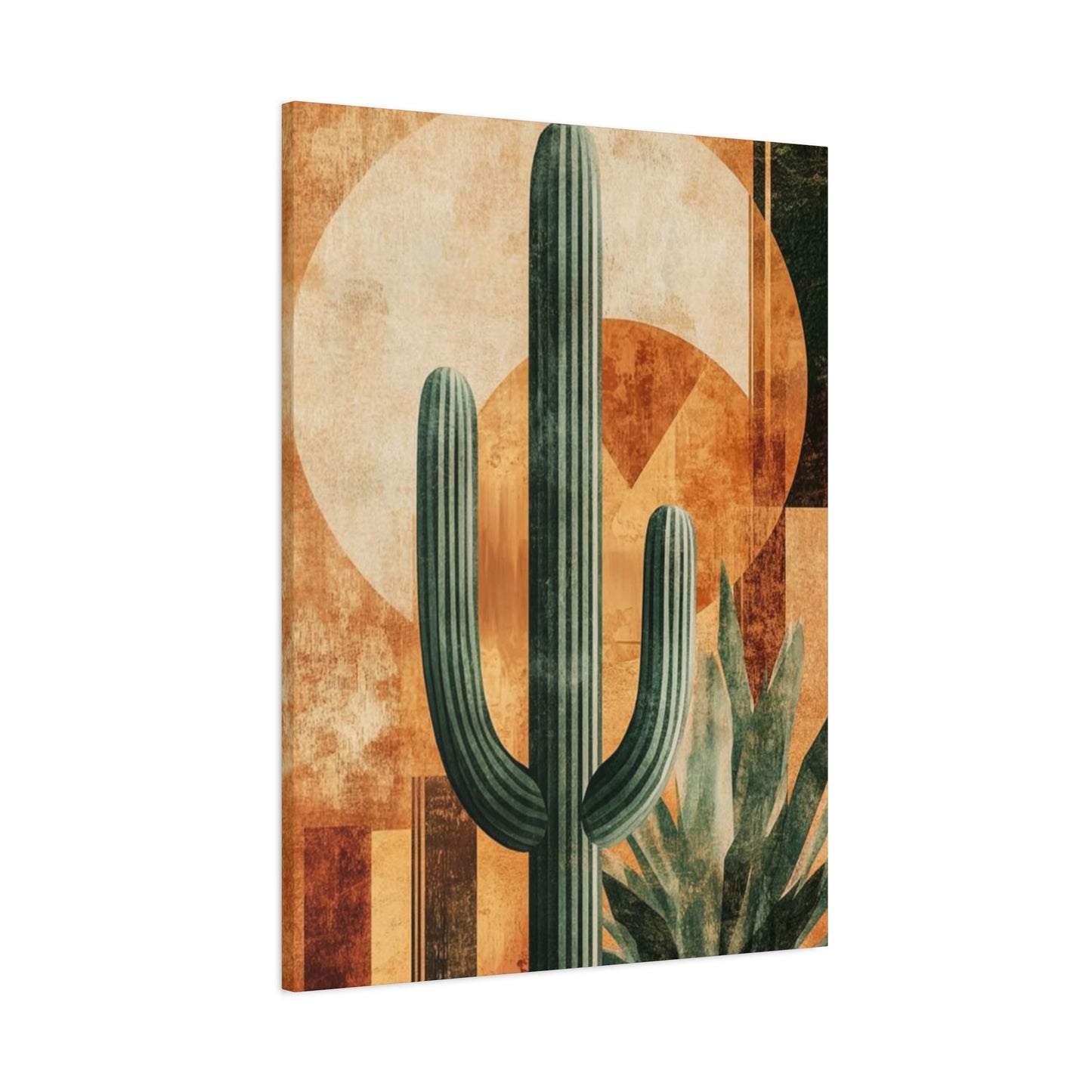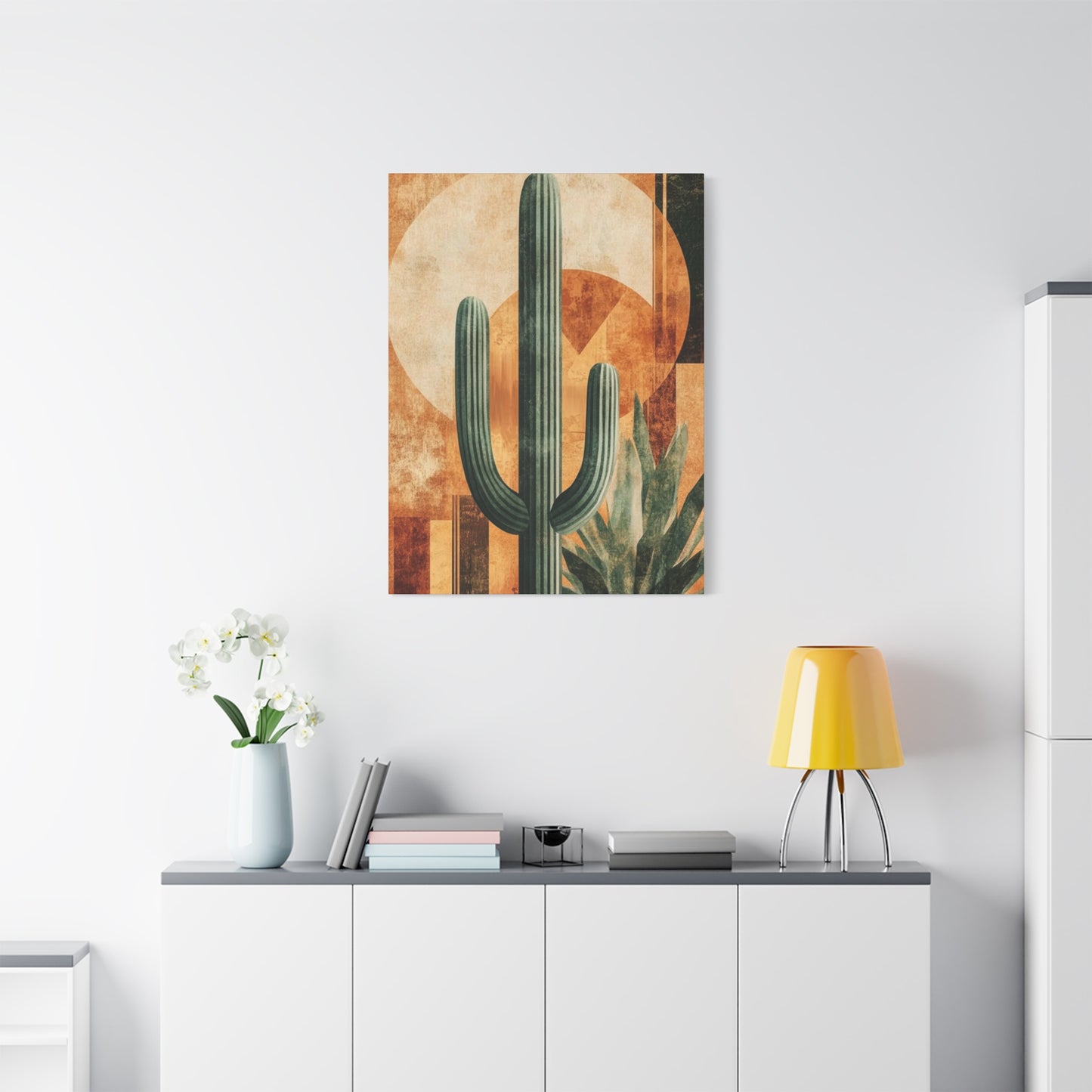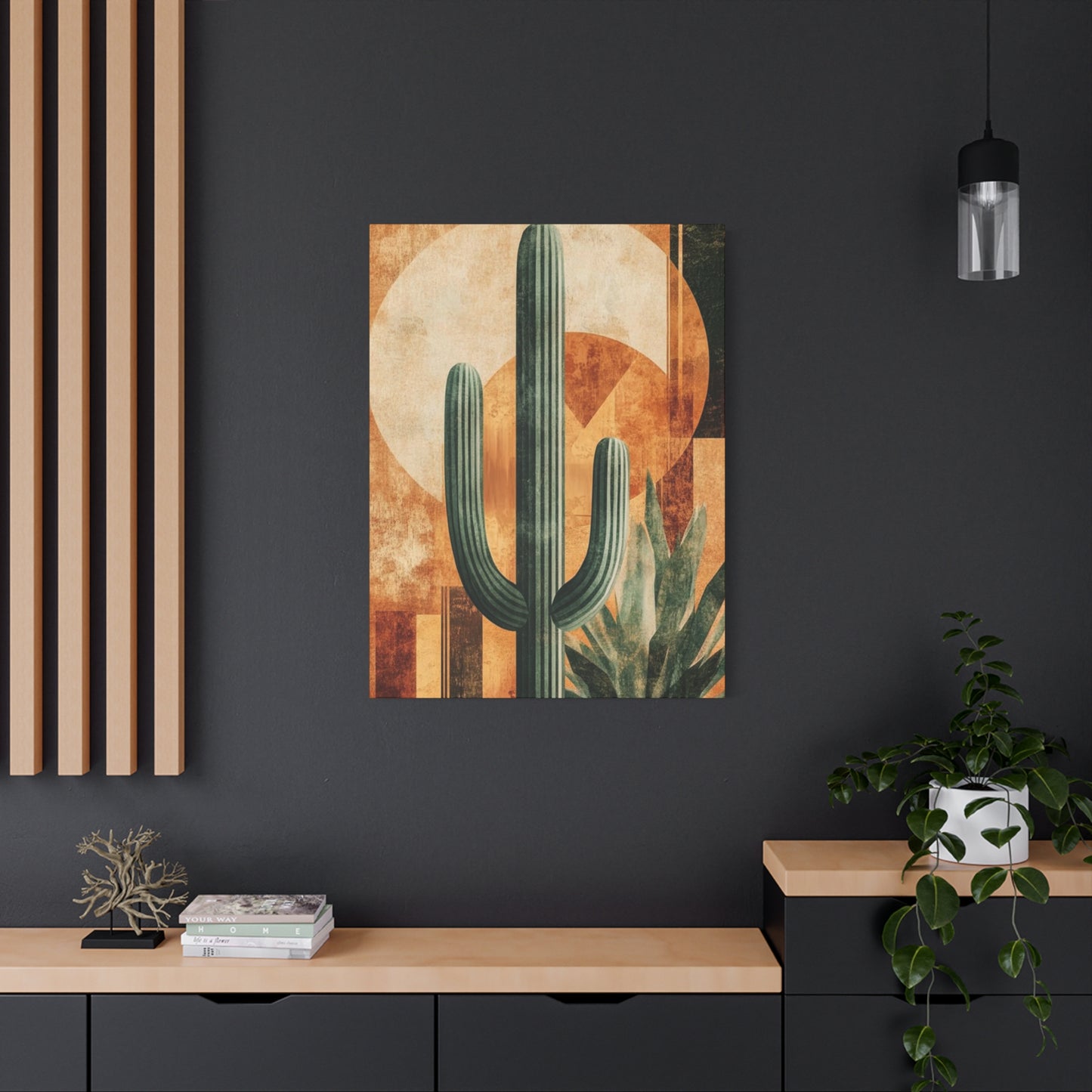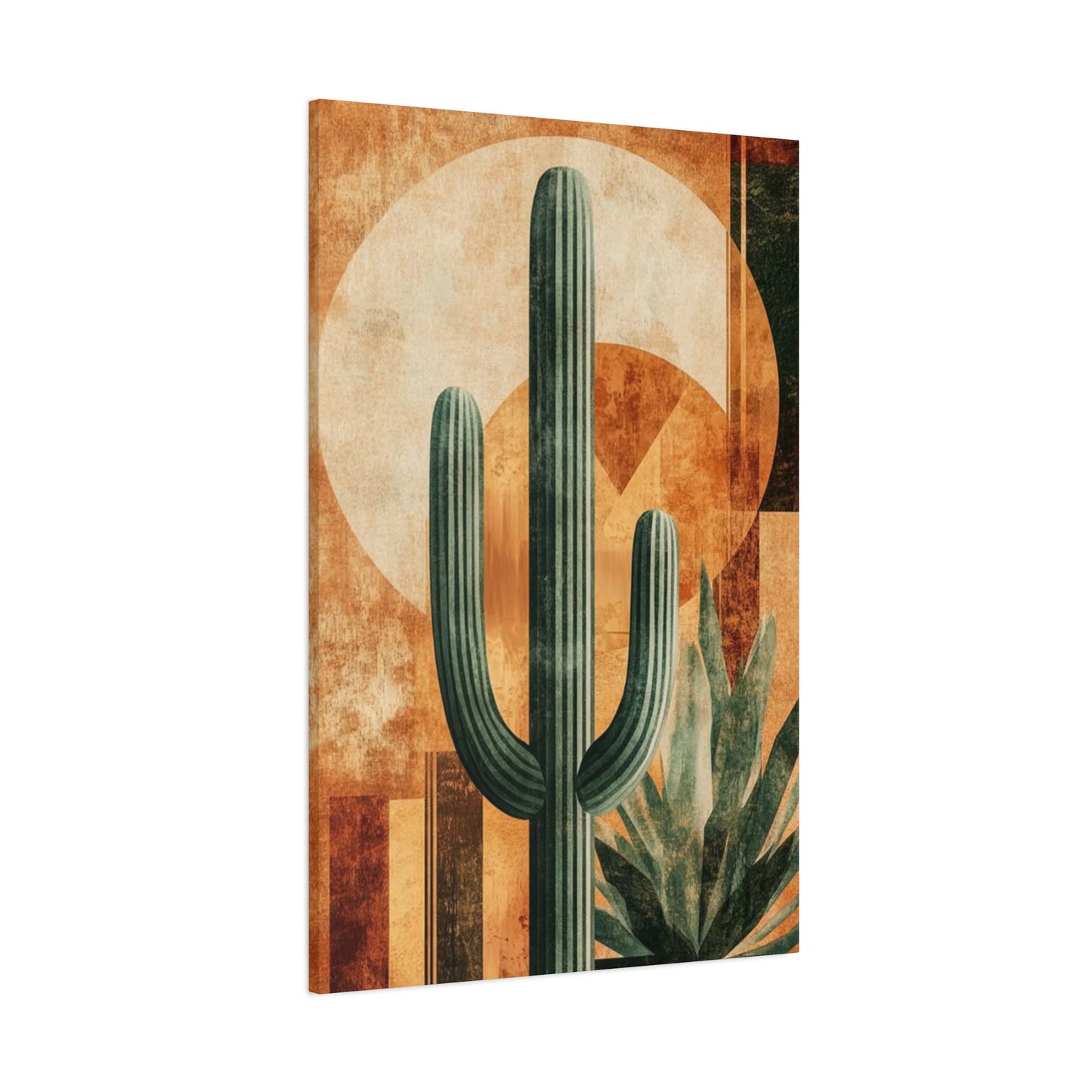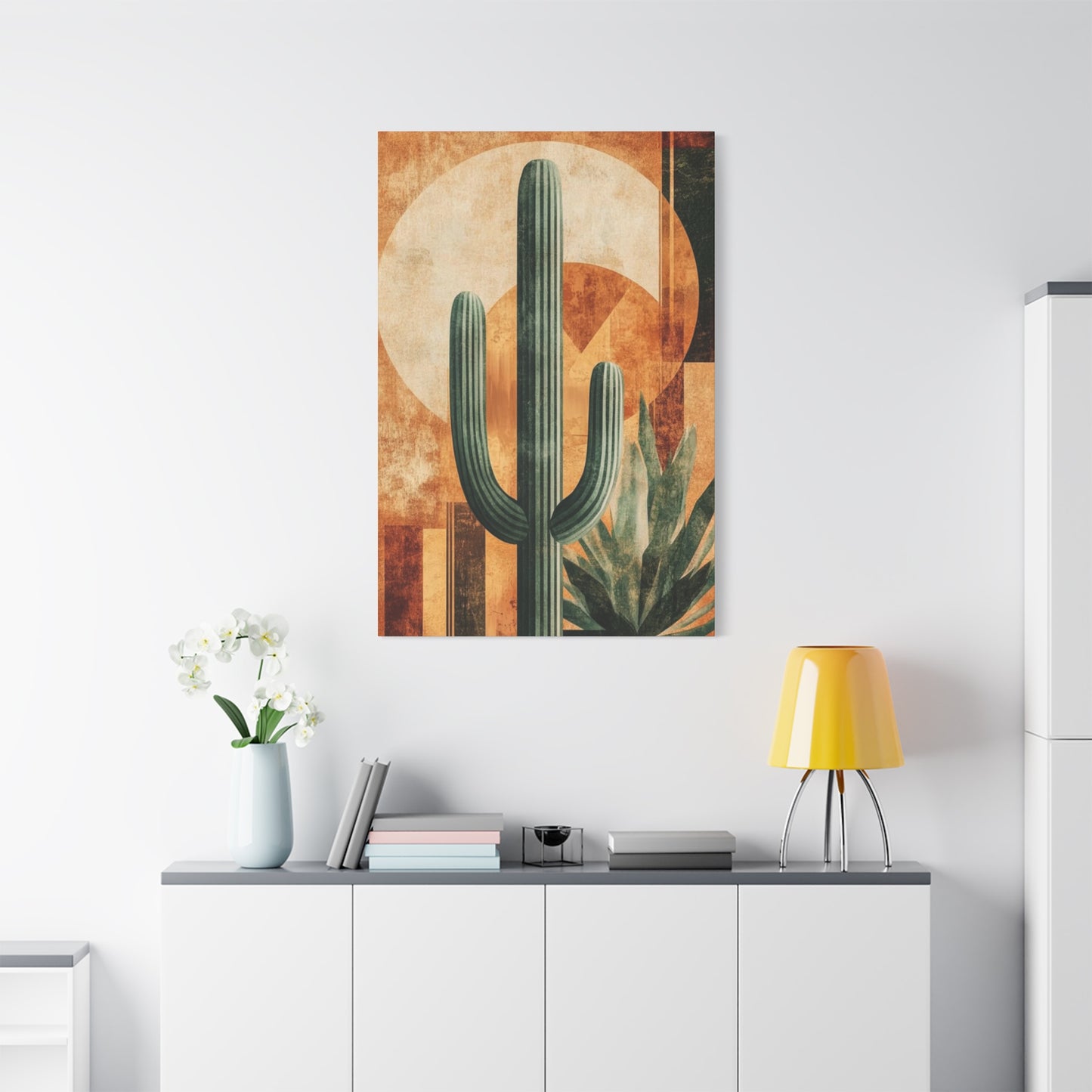Desert Wonder: Huge Cactus Wall Art for Eye-Catching Wall Displays
Oversized cactus wall art has become a hallmark of contemporary interior design, offering a bold yet serene way to bring the beauty of desert landscapes indoors. These massive botanical pieces transform ordinary walls into dramatic focal points, combining natural ruggedness with modern aesthetic sensibilities. By incorporating colossal cactus imagery, homeowners can create striking visual statements that balance grandeur with simplicity, evoking the vastness and tranquility of arid landscapes without overwhelming the space.
The appeal of huge cactus wall art lies in its ability to merge texture, scale, and natural color palettes. From towering saguaro silhouettes to detailed close-ups of prickly pear stems, these artworks highlight the intricate forms and resilience of desert flora. Earthy greens, sandy tones, and subtle shadows create a calming backdrop that complements a wide range of interior styles, including minimalist, industrial, bohemian, and mid-century modern. The natural geometric shapes of cacti add structural interest to walls, providing rhythm and balance that guide the eye and enhance the overall room composition.
Placement and scale are key to maximizing the impact of cactus wall art. Large-format pieces work beautifully above sofas, beds, or dining tables, instantly drawing attention and serving as conversation starters. Smaller segments or diptych arrangements can create continuity along hallways or accent walls without overwhelming compact spaces. The interplay between negative space and the bold cactus imagery ensures that the artwork maintains a sense of openness, echoing the expansive quality of desert environments.
Material and presentation further elevate the effect. Canvas prints offer texture and depth, while metal or acrylic finishes provide sleek modernity. Framing can either blend seamlessly into the décor with natural wood or make a statement with bold metallic trims, emphasizing the artwork’s dramatic scale. Layering cactus prints with complementary desert-inspired décor, such as terracotta accents, woven textiles, or sandy-hued rugs, enhances the thematic coherence of the space.
Ultimately, huge cactus wall art embodies the striking elegance of desert landscapes while offering a versatile design solution for contemporary interiors. By thoughtfully selecting scale, placement, and complementary décor, these bold botanical pieces create eye-catching displays that celebrate nature’s resilience, beauty, and quiet majesty — transforming any wall into a statement of style and serenity.
Desert Grandeur: Cactus Wall Art
The majestic presence of desert flora transformed into wall art creates an undeniable visual impact that elevates any interior space. When these resilient plants are captured in monumental scale and displayed prominently, they become more than mere decoration. They transform into powerful statements about the relationship between nature and human habitation, bringing the raw beauty of untamed wilderness into carefully curated living environments.
The appeal of desert-themed wall art stems from its ability to evoke feelings of vast open spaces and endless horizons. These pieces transport viewers to sun-drenched landscapes where hardy vegetation thrives against all odds. The sculptural forms of these succulents, with their dramatic silhouettes and striking geometric patterns, translate remarkably well to large-format artwork. Their naturally architectural qualities make them perfect subjects for oversized prints that need to fill substantial wall space without overwhelming the room.
Interior designers have embraced these botanical subjects because they bridge multiple design aesthetics seamlessly. Whether your home leans toward industrial minimalism, southwestern rustic, or contemporary chic, massive cactus imagery adapts beautifully. The neutral green tones work harmoniously with virtually any color palette, while the strong vertical lines create visual interest and draw the eye upward, making rooms feel more spacious and airy.
The psychological impact of incorporating desert imagery into home environments cannot be understated. These pieces bring a sense of calm resilience into daily life, reminding viewers of nature's ability to flourish in challenging conditions. The meditative quality of these images encourages mindfulness and creates spaces where stress seems to melt away. Unlike busy, chaotic artwork, large-scale cactus prints offer visual rest stops for overwhelmed minds.
Selecting the perfect oversized desert botanical piece requires consideration of several factors. Wall dimensions, existing furniture arrangements, and natural lighting all play crucial roles in determining which specific artwork will work best in your space. The beauty of these pieces lies in their versatility, as they complement both neutral color schemes and bolder decorative choices. Whether displayed in living rooms, bedrooms, offices, or even commercial spaces, these striking images create immediate atmosphere and character.
Bold Greenery for Modern Walls
Contemporary interiors thrive on the strategic use of natural elements, and oversized succulent imagery delivers this connection to nature with remarkable sophistication. The vibrant green hues characteristic of these desert plants inject life and energy into modern spaces without introducing the chaos of overly complex patterns or jarring color contrasts. These pieces serve as breathing room within minimalist design schemes, preventing spaces from feeling cold or sterile while maintaining clean, uncluttered aesthetics.
The psychology of incorporating greenery into interior spaces has been extensively studied, with research consistently showing that even representations of plant life can reduce stress levels and improve mood. Large-scale botanical artwork amplifies these benefits by creating immersive visual experiences that transport viewers beyond the confines of their walls. The substantial size of these pieces ensures they make meaningful contributions to the overall ambiance rather than disappearing into the background as smaller decorative elements might.
Modern wall design has evolved beyond simple paint colors and wallpaper patterns to embrace statement pieces that define entire rooms. Oversized botanical prints function as architectural elements in their own right, dividing visual space and creating focal points that anchor furniture arrangements. The strong vertical emphasis of many cactus varieties naturally draws the eye upward, creating the illusion of higher ceilings and more generous proportions even in modestly sized rooms.
The versatility of these pieces extends to their compatibility with various interior design movements. Scandinavian minimalism, with its emphasis on natural materials and clean lines, finds perfect partnership with oversized succulent imagery. Industrial lofts gain warmth and organic contrast when brick walls are adorned with massive botanical prints. Even traditional spaces can be updated and refreshed through the careful introduction of contemporary plant-based artwork that respects classical proportions while injecting modern energy.
Color coordination becomes effortlessly simple when working with large-scale botanical prints. The predominantly green palette provides a neutral foundation that complements warm wood tones, cool metal finishes, and everything in between. These pieces work beautifully as sole focal points or as part of carefully curated gallery walls where multiple complementary images create cohesive storytelling. The key lies in allowing the artwork sufficient breathing room to make its intended impact without competing with surrounding elements.
Lighting considerations play a crucial role in maximizing the visual impact of oversized botanical artwork. Natural daylight brings out the subtle color variations and textural details within these prints, while strategic artificial lighting can create dramatic shadows and highlights that enhance their three-dimensional qualities. Gallery lighting techniques borrowed from museum settings can elevate these pieces from mere decoration to genuine art installations that transform ordinary rooms into sophisticated gallery spaces.
Large Cactus Prints for Big Impact
Scale matters tremendously in interior design, and nowhere is this more apparent than in the deployment of massive botanical prints. These substantial artworks command attention in ways that smaller pieces simply cannot achieve, creating instant focal points that organize entire rooms around their presence. The visual weight of these images anchors spaces, providing grounding elements that make large, open-plan areas feel more intimate and purposefully arranged.
The production quality of contemporary large-format printing technology has reached remarkable levels, allowing even subtle details of plant textures and natural lighting to be rendered with stunning clarity. Museum-quality giclée printing processes ensure color accuracy and longevity, protecting these investments from fading and degradation over time. The choice of substrate, whether canvas, fine art paper, or even metal, dramatically influences the final appearance and tactile quality of the finished piece.
Installation considerations for oversized artwork extend beyond simple picture hanging techniques. The substantial weight of large framed prints requires proper wall anchoring and professional hanging systems to ensure both safety and optimal positioning. Height placement follows established gallery standards, with center points typically positioned at approximately eye level, though this can be adjusted based on furniture arrangements and viewing angles. The relationship between artwork size and wall dimensions follows the rule that pieces should occupy roughly two thirds to three quarters of available width for balanced visual impact.
The emotional response elicited by large-scale imagery differs fundamentally from reactions to smaller works. Oversized prints create immersive experiences that engage peripheral vision and create environments rather than simply decorating walls. This immersive quality makes viewers feel as though they could step into the depicted scene, blurring the boundaries between interior space and natural landscape. The effect is particularly powerful with botanical subjects, which already carry associations with growth, vitality, and connection to the natural world.
Investment value represents another consideration when selecting large-format botanical artwork. High-quality pieces from recognized photographers or artists appreciate over time, making them not just decorative choices but potential financial assets. Limited edition prints maintain exclusivity while signed works carry additional provenance that enhances value. Even reproduction prints, when properly executed with archival materials and professional framing, serve as lasting contributions to home environments that withstand changing design trends.
Southwestern Charm in Wall Décor
The distinctive aesthetic of southwestern design celebrates the rugged beauty of desert landscapes and the cultural traditions of the American Southwest. Incorporating massive cactus imagery into this design vocabulary creates authentic connections to place while updating traditional motifs for contemporary sensibilities. These pieces honor the natural heritage of arid regions while presenting it through modern artistic interpretations that appeal to current design tastes.
Traditional southwestern color palettes of terracotta, turquoise, warm browns, and sunset oranges find perfect companionship with the silvery greens and sage tones typical of desert flora. Large-scale botanical prints serve as bridges between these earthy hues and more neutral contemporary schemes, allowing homeowners to incorporate southwestern influences without committing to full-scale thematic decorating. The result is spaces that feel grounded in regional character while remaining fresh and current.
Architectural elements common in southwestern design, including exposed wooden beams, adobe-style walls, and terracotta tile floors, provide ideal backdrops for oversized botanical artwork. The organic textures of these materials complement rather than compete with the natural subjects depicted in the artwork. The interplay between three-dimensional architectural features and two-dimensional artistic representations creates visual depth and layered interest that rewards sustained viewing.
Cultural authenticity matters when incorporating southwestern elements into home design. Oversized cactus prints offer a way to celebrate the natural beauty of desert regions without appropriating indigenous cultural symbols or sacred imagery. These purely botanical subjects pay homage to the landscape itself, honoring the remarkable adaptations that allow life to flourish in challenging environments. This approach allows homeowners from any background to appreciate and celebrate southwestern aesthetics respectfully.
The hospitality industry has embraced this aesthetic combination with particular enthusiasm, as hotels and resorts in desert regions use massive botanical artwork to immediately establish sense of place for guests. These commercial applications demonstrate the powerful ability of large-scale imagery to create atmosphere and set experiential expectations. Homeowners can borrow these techniques, using similar pieces to create resort-like ambiance in private residences that offers daily escape from routine stresses.
Huge Cactus Art for Minimalist Spaces
Minimalist design philosophy centers on the principle that less is more, emphasizing quality over quantity and intentionality over accumulation. Within this framework, every element must earn its place through functional utility or meaningful aesthetic contribution. Massive cactus artwork satisfies both requirements, providing visual interest and emotional impact while maintaining the clean simplicity that defines minimalist interiors.
The sculptural qualities of desert succulents align perfectly with minimalist appreciation for form and structure. These plants represent nature's own exercise in minimalism, with every spine, ridge, and contour serving specific survival purposes. When captured photographically and enlarged to dramatic scale, these efficient designs become studies in geometric purity that complement the spare aesthetic of minimalist spaces. The absence of unnecessary ornamentation in both subject and setting creates harmonious visual relationships.
Color restraint characterizes minimalist interiors, with neutral palettes dominating most spaces. The muted green tones of cactus imagery work within these limitations while introducing just enough chromatic variation to prevent sterility. Single large-scale pieces prove more effective than multiple smaller works in minimalist contexts, as they maintain visual calm while providing necessary focal interest. The negative space surrounding these substantial artworks becomes as important as the images themselves, creating breathing room that enhances rather than diminishes impact.
Material authenticity matters deeply within minimalist design philosophy. High-quality printing on premium substrates, combined with simple but well-crafted framing, demonstrates respect for craftsmanship that minimalists value. The honesty of materials, whether natural wood frames, clean metal edges, or frameless mounting systems, should complement rather than distract from the artwork itself. Every element should feel essential and purposeful, eliminating anything superfluous or merely decorative.
The meditative quality of minimalist spaces finds reinforcement through carefully selected botanical imagery. These pieces encourage contemplation and present viewers with opportunities for visual rest in busy lives filled with constant stimulation. The patient, slow growth of desert plants symbolizes values that resonate with minimalist philosophy, including sustainability, resilience, and finding beauty in simplicity. These metaphorical layers add depth to what might otherwise be purely aesthetic choices.
Desert Dreams on Canvas
Canvas printing transforms botanical photography into tactile artwork that carries warmth and dimensionality impossible to achieve with paper prints alone. The subtle texture of canvas weave adds organic quality that complements natural subjects beautifully, creating visual and textural harmony between medium and message. Gallery-wrapped canvas, where the image continues around the edges of stretcher bars, creates frameless presentations that feel contemporary and unconfined.
The romance of desert landscapes captured on canvas invites viewers into daydreams of wide-open spaces and sun-soaked adventures. These pieces function as windows to elsewhere, offering mental escapes during mundane daily routines. The aspirational quality of travel and exploration embedded in desert imagery makes these works particularly appealing to urban dwellers who crave connection to untamed natural environments. Each glance at these pieces provides momentary transportation to quieter, simpler settings.
Technical considerations in canvas printing significantly affect final results. High-resolution source images are essential for large-format prints that maintain sharpness and clarity when viewed from close range. Color calibration ensures accurate reproduction of the often subtle tonal variations in plant surfaces and natural lighting. Protective coatings shield canvas prints from dust, moisture, and UV damage, extending their lifespan and maintaining visual freshness over years of display.
The versatility of canvas prints makes them suitable for virtually any interior environment. Their relatively lightweight construction compared to framed glass prints simplifies installation while reducing concerns about wall load capacity. Canvas works equally well in formal and casual settings, bringing sophistication to polished spaces while adding refinement to relaxed environments. The format adapts to various sizes, from modest accent pieces to room-dominating installations that span entire walls.
Artistic treatments available in canvas printing range from photorealistic reproductions to stylized interpretations that emphasize graphic qualities or apply painterly effects. Some homeowners prefer images that faithfully represent botanical subjects with documentary accuracy, while others favor more interpretive approaches that emphasize mood and atmosphere over literal detail. The choice depends on personal aesthetic preferences and the overall design direction of the space being decorated.
Cactus Beauty in Oversized Art
The inherent beauty of desert succulents reveals itself most compellingly when presented at heroic scale. Details that might go unnoticed in smaller reproductions become commanding features in oversized prints. The delicate symmetry of spine arrangements, subtle color gradations from base to crown, and the interplay of light and shadow across ribbed surfaces all gain prominence and become subjects of contemplation in their own right.
Photographers specializing in botanical subjects understand the importance of composition, lighting, and perspective in capturing the essential character of their subjects. The best cactus photography celebrates these plants as natural sculptures, emphasizing their architectural qualities while revealing their organic origins. Dramatic side lighting reveals texture and dimensionality, while careful framing isolates individual specimens against simplified backgrounds that eliminate visual distractions.
The seasonal changes that desert plants undergo, though subtle compared to deciduous vegetation, provide variety for artwork selections. New growth appears in vibrant lime greens that gradually mature into deeper sage tones. Flowering periods bring unexpected bursts of color, with brilliant blooms emerging from seemingly inhospitable surfaces. These natural variations mean that even when multiple cactus prints occupy the same space, each can bring unique character and visual interest without redundancy.
Scale relationships within compositions affect how viewers perceive and connect with botanical subjects. Close-up perspectives that fill entire frames with portions of larger plants create abstract qualities that emphasize pattern and texture over recognizable form. Mid-range perspectives present whole specimens in clear context, allowing viewers to appreciate overall structure and growth habits. The choice of perspective dramatically influences the mood and energy of the final artwork.
Contemporary artists working in various media have embraced desert botanical subjects, creating paintings, digital art, and mixed-media works that reinterpret traditional photography. These artistic variations expand options for homeowners seeking unique takes on familiar themes. From watercolor interpretations emphasizing fluidity and transparency to bold graphic treatments reducing forms to essential shapes and colors, the range of available styles ensures something for every taste and interior aesthetic.
Nature's Geometry: Giant Cactus Prints
Mathematical precision exists throughout the natural world, but few plants display it as clearly as certain cactus species. The perfect spirals of spine arrangements, the regular spacing of vertical ribs, and the symmetrical branching patterns of some varieties demonstrate nature's built-in geometry. When these patterns are captured photographically and enlarged to massive proportions, they become studies in natural mathematics that appeal to both artistic and analytical minds.
The Fibonacci sequence and golden ratio, mathematical constants that appear throughout nature, manifest visibly in the growth patterns of many succulent species. These universal principles of proportion and harmony contribute to the inherently pleasing appearance of these plants, creating compositions that feel balanced and correct even to viewers unfamiliar with underlying mathematical relationships. This mathematical foundation explains why botanical artwork succeeds across diverse cultural contexts and personal taste preferences.
Geometric emphasis in desert plant photography often involves isolating subjects against plain backgrounds that eliminate contextual distractions. This approach transforms living organisms into graphic elements that could be mistaken for carefully designed patterns rather than naturally occurring forms. The tension between organic origin and geometric precision creates visual interest that sustains attention and invites closer examination of details that become more impressive the longer they are observed.
Interior spaces dominated by straight lines and right angles, common in modern architecture and contemporary furniture design, benefit from the introduction of organic curves and natural patterns. Giant cactus prints provide this contrast while maintaining visual orderliness through their inherent geometric structure. They soften rigid environments without introducing chaos, offering the best of both geometric precision and organic authenticity in single compelling images.
Black and white treatments of botanical subjects emphasize form and geometry while eliminating the potential distraction of color. These monochromatic interpretations create dramatic, gallery-worthy pieces that work particularly well in sophisticated interiors where color palettes are carefully controlled. The absence of color forces attention to shape, shadow, and texture, revealing details that might be overlooked in full-color versions. These prints pair beautifully with both modern and classical design elements.
Modern Desert Aesthetic for Interiors
Contemporary interpretation of desert aesthetics moves beyond literal representation to capture the essence and feeling of arid landscapes in refined, artful ways. This modern approach emphasizes clean presentations, sophisticated compositions, and integration with current design trends rather than rustic or overtly themed decorating schemes. The result is spaces that feel fresh, current, and connected to nature without resembling tourist-oriented stereotypes of southwestern style.
The modern desert aesthetic embraces restraint and edit, selecting only the most compelling elements of desert beauty for inclusion. Rather than cluttering spaces with multiple botanical specimens, the approach favors singular, impactful pieces that command attention through size and quality. This selectivity reflects broader contemporary design values that prioritize curation over accumulation, creating environments that feel intentional and thoughtfully composed rather than randomly assembled.
Material palettes in modern desert-inspired interiors mix unexpected elements to create sophisticated tension. Sleek metals pair with rough stone, polished concrete meets warm textiles, and industrial elements combine with natural fibers. Within these carefully balanced environments, massive botanical prints serve as unifying elements that tie disparate materials together through their connection to the natural world. The living, breathing quality of plant imagery softens hard surfaces and adds essential warmth.
Sustainability concerns increasingly influence design choices, and desert-inspired aesthetics align well with eco-conscious values. Desert plants represent ultimate sustainability, thriving with minimal resources and demonstrating remarkable resilience. Choosing botanical artwork over resource-intensive decorative elements allows homeowners to express environmental awareness through aesthetic choices. The low-maintenance reality of the depicted plants metaphorically supports lifestyles that value simplicity and sustainability.
Regional adaptation of modern desert aesthetics means these principles work far beyond the American Southwest. Urban apartments in cold climates, coastal homes in humid regions, and suburban houses in temperate zones all successfully incorporate these design elements. The universal appeal of natural beauty transcends geographical boundaries, allowing the modern desert aesthetic to function as a globally relevant design language rather than narrowly regional style.
Large Scale Serenity: Cactus Edition
The calming influence of natural imagery has been documented extensively in psychological research, with studies confirming that views of nature reduce stress hormones, lower blood pressure, and improve overall wellbeing. Large-scale botanical prints amplify these benefits by creating immersive visual experiences that engage more of the viewer's field of vision. The effect is particularly pronounced with desert imagery, which carries associations with stillness, timelessness, and peaceful solitude.
Creating sanctuary spaces within homes has become increasingly important as work-from-home arrangements blur boundaries between professional and personal life. Bedrooms, meditation corners, and reading nooks benefit especially from the serene presence of oversized botanical artwork that encourages relaxation and mental quietude. These pieces help define zones within open-plan layouts, using visual weight and emotional tone to establish distinct atmospheres in different areas.
The slow, patient growth characteristic of desert plants offers metaphorical lessons about persistence and playing the long game in fast-paced modern life. These organisms survive and even thrive by conserving resources, adapting to conditions, and maintaining steady progress rather than seeking rapid expansion. The symbolism resonates with viewers seeking to cultivate similar qualities in their own lives, making these pieces particularly meaningful beyond their immediate aesthetic appeal.
Color psychology explains much of the calming effect associated with botanical imagery. Green hues naturally reduce anxiety and promote mental restoration, tapping into evolutionary associations between vegetation and safety. The specific shades found in desert flora, often more muted and sage-like than the vibrant greens of tropical plants, create particularly soothing effects without the visual intensity that might prove distracting in spaces intended for rest and rejuvenation.
Sound design and botanical imagery work synergistically to create multi-sensory sanctuary experiences. Pairing large-scale cactus prints with carefully selected audio environments enhances the transportive quality of these pieces. Natural soundscapes featuring gentle wind, distant bird calls, or the subtle creaking of desert plants create immersive experiences that engage multiple senses simultaneously. These combined approaches to environmental design produce spaces that truly function as retreats from the demands of daily life.
Botanical Strength in Wall Art
The resilience and toughness of desert plants makes them powerful symbols of survival, adaptation, and inner strength. These qualities translate beautifully into wall art that inspires and motivates while remaining aesthetically appealing. The metaphorical weight of these images adds layers of meaning that transform them from simple decoration into daily reminders of personal values and aspirations.
Survival mechanisms visible in cactus morphology tell compelling stories about adaptation and innovation. Water-storing stems, protective spines, extensive root systems, and efficient photosynthetic processes all represent evolutionary solutions to challenging environmental conditions. When these features are highlighted through thoughtful photography and presented at monumental scale, they become visual lessons about creative problem-solving and thriving despite obstacles.
Professional environments, including corporate offices, medical facilities, and educational institutions, increasingly incorporate botanical imagery for its positive psychological effects. Large-scale cactus prints work particularly well in these contexts, projecting professionalism while introducing natural elements that humanize otherwise institutional spaces. The strength symbolism inherent in these subjects aligns well with organizational values around resilience, growth, and sustained performance.
Personal significance adds another dimension to botanical artwork selection. Individuals who have overcome significant challenges often feel particular connection to desert plant imagery, seeing their own experiences reflected in organisms that persist against odds. These pieces can serve as private reminders of personal strength and growth, carrying meaning that extends far beyond their decorative function. The choice to display such imagery makes subtle statements about values and identity.
The protective qualities of spines and tough outer surfaces contrast interestingly with the life-sustaining moisture stored within, creating visual metaphors for the balance between self-protection and nurturing openness. This duality resonates with viewers navigating similar tensions in their own lives, making these images particularly rich subjects for contemplation. The artistic decision to emphasize either the forbidding exterior or hints of interior softness dramatically affects the emotional tone of the final piece.
Cactus Canvas for Urban Homes
Urban living often means limited access to natural spaces, making the integration of nature-inspired elements into city homes particularly important for resident wellbeing. Large-scale botanical prints bring substantial doses of natural beauty into concrete environments, creating visual connections to the natural world that urban dwellers might otherwise miss. These pieces function as windows to elsewhere, offering momentary mental escapes from dense urban surroundings.
Space limitations in city apartments require strategic decorating choices that maximize impact without cluttering limited square footage. Single oversized botanical prints often work better than multiple smaller pieces, creating focal points without consuming precious wall space with busy gallery arrangements. The vertical emphasis of many cactus varieties draws eyes upward, creating illusions of height that make small rooms feel more spacious and less confining.
Industrial architectural features common in converted urban lofts, including exposed brick, concrete columns, and visible ductwork, provide interesting backdrops for botanical artwork. The softness of plant imagery creates compelling contrast against hard urban materials, humanizing spaces that might otherwise feel cold or impersonal. This juxtaposition of natural and industrial elements defines contemporary urban aesthetic, creating environments that acknowledge their urban context while offering organic relief.
Light considerations in urban environments differ significantly from suburban or rural settings. City apartments may face other buildings, receive limited natural light, or have specific exposure that affects how artwork appears throughout the day. Selecting botanical prints with appropriate tonal ranges for specific lighting conditions ensures they remain visible and impactful rather than disappearing into shadows or washing out in harsh direct sunlight. Strategic artificial lighting can supplement natural illumination when necessary.
The pace and intensity of urban life makes creating calm, restorative home environments essential for maintaining mental health and life balance. Large-scale botanical artwork contributes to this sanctuary-building by introducing natural elements that encourage slowing down and reconnecting with organic rhythms. The quiet strength of desert plants offers particular comfort to city dwellers navigating stressful urban environments, serving as visual reminders that thriving is possible even in challenging conditions.
Desert Green Meets Modern Design
The integration of natural color elements into contemporary design schemes requires careful consideration of shade, saturation, and tonal relationships. The particular greens found in desert flora occupy a sweet spot between vibrancy and neutrality, providing enough color interest to prevent monotony while remaining subdued enough to work within minimalist and modern contexts. These sophisticated hues complement both warm and cool color palettes, making them remarkably versatile design elements.
Modern interiors often feature carefully controlled color stories with limited palettes emphasizing neutrals punctuated by strategic accent colors. Botanical prints in desert green tones function equally well as primary color sources or as harmonizing elements that tie together other green accents throughout the space. The natural variation within a single plant specimen, from pale new growth to deep mature tones, provides built-in tonal graduation that adds depth without requiring multiple colors.
Texture layering enhances modern interiors by preventing the visual flatness that can result from emphasis on smooth surfaces and clean lines. Large-scale botanical prints add perceived texture through the details they reveal in plant surfaces, even though the prints themselves may be smooth. When combined with actual three-dimensional texture in furniture, textiles, and decorative objects, these images contribute to rich, multi-layered environments that engage multiple senses.
The philosophy behind modern design emphasizes honest expression of materials, purposeful minimalism, and integration of indoor and outdoor spaces. Botanical artwork advances all these principles by celebrating natural subjects through quality materials and printing processes, avoiding unnecessary decorative embellishment, and literally bringing outdoor elements inside. This alignment with core modern design values explains why botanical prints have become staples rather than passing trends in contemporary interiors.
Scale transitions between different elements within rooms affect visual flow and spatial perception. Oversized botanical prints can bridge the gap between large architectural features like walls and ceilings and smaller human-scale objects like furniture and accessories. This intermediate scale helps spaces feel properly proportioned and prevents the disconnect that sometimes occurs in rooms where all elements fall into either very large or very small categories with nothing connecting them.
Huge Cactus Wall Art for Bold Rooms
Rooms with strong design personalities require equally confident artwork that can hold its own within assertive environments. Massive botanical prints meet this challenge by commanding attention through sheer scale while maintaining enough visual simplicity to avoid creating chaos. The key lies in selecting images with strong compositional structure and clear focal points that read clearly even from across large rooms.
Color-bold interiors featuring saturated hues on walls or in furnishings benefit from botanical artwork that provides visual rest stops within intense environments. The relatively neutral green tones of cactus imagery offer breathing room that prevents color overload while maintaining enough chromatic interest to avoid feeling like afterthoughts. The natural quality of plant subjects creates harmony with bold human-made colors, grounding vibrant schemes in organic reality.
Pattern mixing in contemporary interiors requires careful balancing to avoid visual confusion. Large-scale botanical photography, with its realistic representation of natural subjects, reads as figurative rather than patterned, allowing it to coexist peacefully with geometric patterns in textiles, wallcoverings, or area rugs. The organic irregularity of plant forms provides counterbalance to rigid patterns, creating dynamic tension that keeps spaces feeling energetic rather than static.
Architectural drama in the form of high ceilings, expansive walls, or unusual room proportions demands appropriately scaled artwork to maintain proper visual balance. Standard-sized prints disappear in such spaces, leaving walls feeling bare despite being technically decorated. Massive botanical installations running floor to ceiling or spanning entire walls provide the visual weight necessary to anchor dramatic rooms and make them feel complete rather than empty.
Lighting strategy becomes particularly important when working with oversized artwork in bold rooms. These pieces need adequate illumination to compete with other strong design elements and maintain their intended impact. Gallery spotlights, picture lights, or even LED strips can ensure botanical prints remain visible focal points rather than receding into background obscurity. The direction and quality of light dramatically affect how texture and detail appear in large-format photography.
The Minimalist's Desert Statement
Minimalist design philosophy requires that every object in a space justify its presence through functional necessity or meaningful aesthetic contribution. Within this demanding framework, art must work considerably harder than in more forgiving decorative schemes. Large-scale botanical prints succeed in minimalist environments by serving multiple purposes simultaneously as focal points, color sources, and meaningful connections to the natural world that minimalists value.
The edit process central to minimalist living extends to art selection, with the goal being to own fewer but better pieces rather than accumulating numerous mediocre items. This approach favors investment in museum-quality botanical photography that will remain relevant and appealing across decades rather than following temporary trends. The timeless quality of natural subjects ensures these pieces won't feel dated as design fashions cycle through their inevitable changes.
Negative space functions as an active design element in minimalist interiors rather than merely representing unused area. The careful positioning of large botanical prints within expansive blank walls creates intentional relationships between image and emptiness that enhance both. The breathing room surrounding these pieces allows them to make full impact while the quiet walls provide mental rest that balances the visual interest of the artwork.
Material quality takes priority over quantity in minimalist philosophy, with emphasis on craftsmanship, durability, and authentic materials. This value system extends to art selection, favoring genuine photographic prints over mass-produced posters, archival framing materials over budget alternatives, and thoughtful installation over quick hanging solutions. The visible quality of every element should reflect and reinforce minimalist principles about valuing substance over superficial appearance.
The spiritual dimension of minimalism, though often unspoken, influences many practitioners of this lifestyle. The practice of removing excess creates mental space for contemplation and appreciation of what remains. Large-scale botanical prints support this contemplative quality, offering subjects for meditation and reflection that deepen with sustained attention. The patient, slow growth of desert plants symbolizes minimalist values of living deliberately and finding sufficiency in simplicity.
Sculptural Beauty in Cactus Form
Three-dimensional qualities inherent in cactus morphology translate beautifully to two-dimensional representation through careful photographic technique. Side lighting reveals the sculptural nature of these plants, casting shadows that emphasize ridges, valleys, and projections. The resulting images possess depth and dimensionality that transcend flat reproduction, creating illusions of relief sculpture that engage viewers' spatial perception.
Art history connections between botanical subjects and sculpture date back centuries, with many artists drawing inspiration from natural forms when creating abstract works. The modernist movement in particular celebrated the economy of line and purity of form found in nature, qualities abundantly evident in desert plant architecture. Contemporary botanical photography continues this tradition, presenting natural subjects as found sculptures worthy of the same attention given to human-made artistic objects.
Installation approaches can enhance the sculptural qualities of botanical artwork. Floating mounting systems that position prints slightly forward of walls create subtle shadows that emphasize the dimensional presence of these pieces. Frameless mounting on thick substrates produces similar effects, making prints feel more like objects than mere images. These installation techniques require professional expertise but dramatically increase visual impact.
The relationship between actual sculptural objects and two-dimensional sculptural imagery creates interesting opportunities for interior composition. Placing three-dimensional decorative objects, whether abstract sculptures or functional items with strong form, near large-scale botanical prints creates dialogues between real and depicted dimensionality. The echoes and contrasts between these elements add layers of visual interest that reward careful observation.
Lighting design transforms flat prints into dynamic installations that change throughout the day or in response to different artificial lighting schemes. Grazing light across the surface of textured prints emphasizes their physical presence while creating subtle shadows within the image that enhance perceived depth. The interplay between light sources, print surfaces, and depicted subjects becomes part of the artwork itself, adding temporal dimension to static images.
Earthy Elegance: Cactus Wall Style
Natural sophistication defines design approaches that celebrate organic materials and earth-derived color palettes without sacrificing elegance or refinement. Large-scale botanical prints anchor these schemes by bringing literal representations of nature into dialogue with natural materials used throughout interiors. The result is spaces that feel grounded and authentic while maintaining polish and intentionality in every detail.
Earth-tone palettes ranging from warm terracotta and rich browns through cool grays and sage greens create cohesive backgrounds for botanical artwork. These colors reference natural landscapes and create harmonious relationships between walls, floors, furnishings, and artwork. The key lies in varying tones and textures within the palette to prevent monotony while maintaining overall unity. Botanical prints contribute additional tonal variation within the established color story.
Material authenticity drives earthy elegant design, with emphasis on real wood, stone, metal, and natural fibers rather than synthetic imitations. This commitment to genuine materials extends to artwork selection, favoring actual photographic prints or original paintings over digitally manipulated reproductions. The honest representation of botanical subjects on quality substrates maintains material integrity throughout the space.
Tactile experiences contribute significantly to the perception of earthiness and elegance. Rough stone surfaces contrast with smooth wood, nubby linens offset glossy metals, and all these varied textures find visual echo in the depicted surfaces of large-scale botanical prints. Even though the prints themselves may be smooth, the textures they portray contribute to the overall sensory richness of the environment.
The integration of living plants alongside botanical artwork creates layered connections to nature that reinforce the earthy elegant aesthetic. Real specimens in beautiful planters placed near large-scale images of their relatives create interesting dialogues between living and depicted nature. This approach must be handled carefully to avoid redundancy, but when executed thoughtfully it deepens the natural themes and creates spaces that truly celebrate botanical beauty.
Transform Walls with Giant Cactus Prints
The transformative power of properly selected and positioned large-scale artwork cannot be overstated. These pieces possess the ability to completely redefine rooms, turning anonymous blank walls into memorable design features that establish character and mood. The process of transformation extends beyond mere decoration to include psychological and emotional effects that change how occupants experience their spaces.
Before and after comparisons reveal the dramatic impact that single oversized botanical prints create. Rooms that felt incomplete or characterless gain instant personality and visual interest when strong focal points are introduced. The improvement goes beyond aesthetic enhancement to include practical benefits like improved acoustics from wall coverings and the perceived warmth that large art installations provide to otherwise cold spaces.
Strategic positioning determines whether oversized artwork achieves its full potential or fails to make expected impact. Centering pieces on feature walls, positioning them at appropriate heights for primary viewing angles, and ensuring adequate surrounding space all influence effectiveness. Professional design consultation can be valuable when working with particularly large or expensive pieces, ensuring investment dollars achieve maximum return in visual impact.
The renovation alternative that large-scale artwork represents deserves consideration. Rather than undertaking expensive and disruptive construction projects, homeowners can achieve dramatic spatial transformation through strategic art acquisition and installation. This approach provides flexibility that permanent architectural changes cannot match, allowing spaces to evolve as tastes change or as residents move to new homes where the art moves with them.
Value perception in interior design increasingly emphasizes experiences over possessions, with successful spaces measured by how they make occupants feel rather than their construction costs. Large-scale botanical prints excel at creating positive emotional responses, engineering environments that support wellbeing and enhance daily life. This experiential value often exceeds the monetary cost of acquisition, making these pieces worthwhile investments in quality of life.
Conclusion
Desert Wonder: Huge Cactus Wall Art for Eye-Catching Wall Displays celebrates the striking beauty, resilience, and architectural elegance of cacti, translating their natural grandeur into transformative interior décor. Cactus-themed wall art has emerged as a versatile design element, capable of introducing both visual drama and a sense of serenity into living spaces. These towering, sculptural plants, rendered in bold prints, large-scale canvases, or mixed-media artworks, capture the rugged charm of desert landscapes while bringing a contemporary edge to interiors, creating walls that command attention and inspire admiration.
At its core, huge cactus wall art combines natural form with artistic interpretation. Cacti, with their geometric shapes, spiky textures, and subtle color variations, offer a unique interplay of pattern and contrast that is inherently captivating. Artists and designers often amplify these features, emphasizing scale, color, and structure to create eye-catching compositions that draw viewers in. Whether depicted in photorealistic detail, stylized abstraction, or minimalist line work, cactus artwork transforms ordinary walls into visual statements that balance boldness with natural elegance, making it ideal for modern, eclectic, or desert-inspired interiors.
From an interior design perspective, cactus wall art is exceptionally versatile. Large-format prints serve as dramatic focal points, particularly in living rooms, bedrooms, or open-plan spaces where the artwork can dominate a wall without overwhelming the room. Their palette — ranging from rich desert greens to muted sand tones and warm sunset accents — complements a wide array of interior color schemes, from neutral minimalism to bohemian warmth. Smaller pieces or gallery arrangements allow homeowners to curate a layered display, combining cactus art with desert landscapes, abstract textures, or complementary botanical imagery for a cohesive and visually compelling narrative. The result is a balance of bold visual impact and aesthetic harmony that elevates any interior.
Lighting enhances the dramatic presence of cactus wall art. Natural daylight highlights textures and color nuances, bringing out the fine details of spines, ridges, and shadows, while strategically placed accent lighting accentuates depth and dimensionality. The interplay of light and shadow can make a cactus appear almost three-dimensional, creating a sense of movement and vitality that transforms static artwork into an immersive experience. Thoughtful illumination ensures that cactus art not only captures attention but also enhances the room’s atmosphere, adding warmth, intrigue, and sophistication.
Beyond its visual appeal, cactus wall art carries symbolic and emotional resonance. Cacti are emblematic of resilience, adaptability, and endurance — qualities that resonate deeply in contemporary life. Integrating these motifs into interior décor reminds viewers of strength and perseverance, while also promoting a sense of calm and groundedness. The presence of desert-inspired art introduces a natural element into urban or indoor environments, fostering a connection with nature, enhancing mindfulness, and inspiring both reflection and creativity.
Artists employ diverse techniques to render cacti in compelling ways. Photorealistic photography captures intricate textures, fine spines, and natural light play, while digital illustrations and paintings allow for bold stylization, dramatic contrasts, and innovative color interpretations. Abstract or geometric designs emphasize form and composition, highlighting the architectural qualities of cacti, while watercolor and mixed-media approaches introduce softness and fluidity. This variety ensures that cactus wall art can adapt to multiple interior styles and emotional intentions, offering both dramatic statement pieces and subtle, contemplative décor options.



















